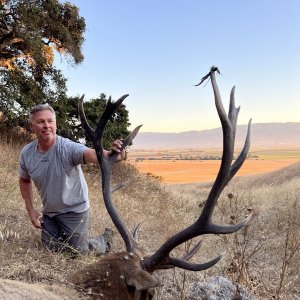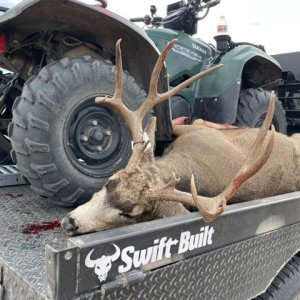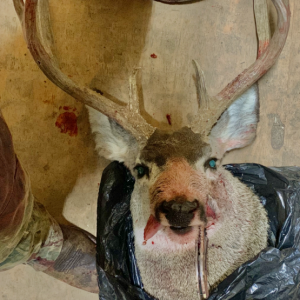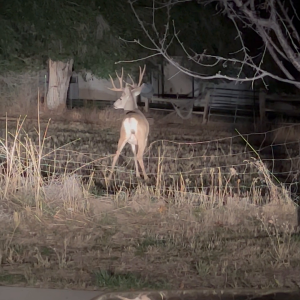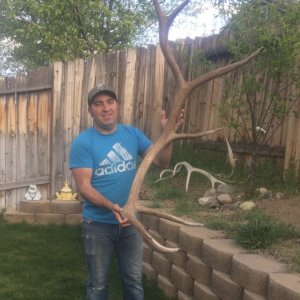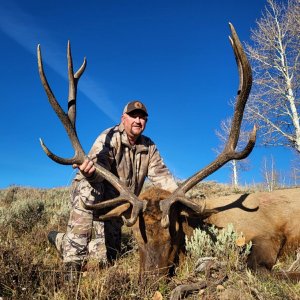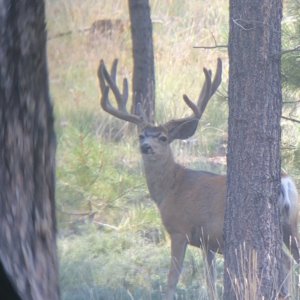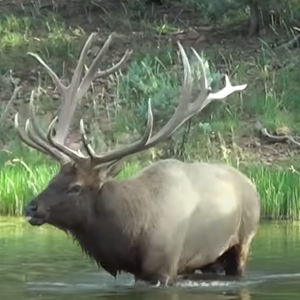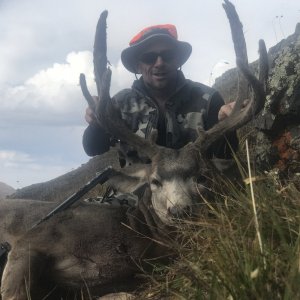** ADVANCE FOR WEEKEND EDITIONS, APR. 4-5 **Agent Doug Roe of the U.S. National Forest Service discusses the illegal marijuana fields thought to be growing in Dixie National Forest just North of St. George, Utah on Tuesday, March 24, 2009. (AP Photo/The Salt Lake Tribune, Cobb Condie) ** DESERET NEWS OUT **
Monday, 06 April 2009
Efforts increase to find marijuana growers
Nate Carlisle - Canyon country exchange
LEEDS -- U.S. Forest Service Special Agent Doug Roe stopped his truck and pointed to a creek flowing down the Pine Valley Mountains.
"If you hike up that drainage, you're guaranteed to find a grow or a grow from last year," Roe said.
A "grow" refers to a marijuana field, and they've become so prevalent in Utah you might step in one just by hiking in a straight line.
"I imagine we've got people walking right by grows and not knowing it," Roe said.
Federal and local law enforcement plan a major offensive against marijuana growers this summer. National Guard helicopters will fly above backcountry or wilderness areas looking for fields. Police and agents like Roe plan to hike the terrain, too, and likely growing areas will be placed under surveillance.
But average Utahns also are part of this year's stepped-up plan. Michael Root, the supervisor special agent for the Drug Enforcement Administration in Salt Lake City, said his office will attend outdoor shows to educate hikers, hunters and riders and place fliers at trailheads warning everyone of signs of a marijuana field.
Roe said the Forest Service may even post signs along roads asking people to report indications of marijuana growing. Iron County Sheriff Mark Gower said his office also is considering educating citizens there so "they know to back out and leave and not walk in and get hurt."
The increased efforts result from what law enforcement found in Utah in 2008. They seized about 90,000 marijuana plants growing on public lands. There were also other fields where law enforcement arrived too late -- the marijuana had already been harvested and shipped.
Most of the grow sites were in the state's southwest quadrant, but one field was found as far north as the Sawtooth Mountains, a few miles from the Idaho state line.
In previous years, law enforcement had located only a few fields. In November, Scott Burns, who was then the deputy director of the Office of National Drug Control Policy, said cartels based in Mexico have moved growing operations to Utah because of increased law enforcement pressure on the U.S.-Mexican border and in other American states.
At least seven people have been charged in connection with last year's grows. Roe said evidence indicates cartel marijuana growers have been operating in Utah since 2005.
There is also evidence some of the marijuana was first planted near Mesquite, Nev., and transplanted to Utah, Roe said. Investigators at Utah sites found thousands of discarded nursery or Styrofoam cups they believe were used to transplant the drugs, he said.
The fields can be a few hundred yards to miles off of a road or main trail, but are within proximity to a water source. Pipes or hoses are used to siphon the water and irrigate the marijuana. Bags of fertilizer as well as pesticides, insecticides and rodent repellent are carried to the fields.
Field hands, usually recruited in Mexico, live with the fields in tents with a supplier delivering food and other necessities, law enforcement has said. Roe said investigators have found BB and pellet guns. At one field, Row said he found a snare designed to catch a deer.
Roe is hoping anyone finding such supplies in the backcountry or wilderness this year takes note, maybe plotting the site with a handheld GPS but definitely reporting it to police.
"We're not asking people to hang around to take a GPS," Roe said. "But if they're already there, it doesn't take more than a minute to get a GPS."
But Andrew Hook, who is the administrator of a Utah and Wyoming hiking group on Facebook, said he is worried asking hikers to be lookouts could put hikers in danger, especially if the producers know about the education efforts.
Hook said he supports efforts to combat drug manufacturing, "but asking the public to be the eyes of the DEA is not the answer."
There have been no reported instances of violence by marijuana producers in Utah -- just reports of them running at the sight of law enforcement or hunters who stumble into their camp.
But Gower said he is worried about violence, too, and that's why he wants to educate people. The sheriff thinks asking for the public's help will make everyone safer.
"We don't know how big [marijuana growing] is at this point," Gower said.
Monday, 06 April 2009
Efforts increase to find marijuana growers
Nate Carlisle - Canyon country exchange
LEEDS -- U.S. Forest Service Special Agent Doug Roe stopped his truck and pointed to a creek flowing down the Pine Valley Mountains.
"If you hike up that drainage, you're guaranteed to find a grow or a grow from last year," Roe said.
A "grow" refers to a marijuana field, and they've become so prevalent in Utah you might step in one just by hiking in a straight line.
"I imagine we've got people walking right by grows and not knowing it," Roe said.
Federal and local law enforcement plan a major offensive against marijuana growers this summer. National Guard helicopters will fly above backcountry or wilderness areas looking for fields. Police and agents like Roe plan to hike the terrain, too, and likely growing areas will be placed under surveillance.
But average Utahns also are part of this year's stepped-up plan. Michael Root, the supervisor special agent for the Drug Enforcement Administration in Salt Lake City, said his office will attend outdoor shows to educate hikers, hunters and riders and place fliers at trailheads warning everyone of signs of a marijuana field.
Roe said the Forest Service may even post signs along roads asking people to report indications of marijuana growing. Iron County Sheriff Mark Gower said his office also is considering educating citizens there so "they know to back out and leave and not walk in and get hurt."
The increased efforts result from what law enforcement found in Utah in 2008. They seized about 90,000 marijuana plants growing on public lands. There were also other fields where law enforcement arrived too late -- the marijuana had already been harvested and shipped.
Most of the grow sites were in the state's southwest quadrant, but one field was found as far north as the Sawtooth Mountains, a few miles from the Idaho state line.
In previous years, law enforcement had located only a few fields. In November, Scott Burns, who was then the deputy director of the Office of National Drug Control Policy, said cartels based in Mexico have moved growing operations to Utah because of increased law enforcement pressure on the U.S.-Mexican border and in other American states.
At least seven people have been charged in connection with last year's grows. Roe said evidence indicates cartel marijuana growers have been operating in Utah since 2005.
There is also evidence some of the marijuana was first planted near Mesquite, Nev., and transplanted to Utah, Roe said. Investigators at Utah sites found thousands of discarded nursery or Styrofoam cups they believe were used to transplant the drugs, he said.
The fields can be a few hundred yards to miles off of a road or main trail, but are within proximity to a water source. Pipes or hoses are used to siphon the water and irrigate the marijuana. Bags of fertilizer as well as pesticides, insecticides and rodent repellent are carried to the fields.
Field hands, usually recruited in Mexico, live with the fields in tents with a supplier delivering food and other necessities, law enforcement has said. Roe said investigators have found BB and pellet guns. At one field, Row said he found a snare designed to catch a deer.
Roe is hoping anyone finding such supplies in the backcountry or wilderness this year takes note, maybe plotting the site with a handheld GPS but definitely reporting it to police.
"We're not asking people to hang around to take a GPS," Roe said. "But if they're already there, it doesn't take more than a minute to get a GPS."
But Andrew Hook, who is the administrator of a Utah and Wyoming hiking group on Facebook, said he is worried asking hikers to be lookouts could put hikers in danger, especially if the producers know about the education efforts.
Hook said he supports efforts to combat drug manufacturing, "but asking the public to be the eyes of the DEA is not the answer."
There have been no reported instances of violence by marijuana producers in Utah -- just reports of them running at the sight of law enforcement or hunters who stumble into their camp.
But Gower said he is worried about violence, too, and that's why he wants to educate people. The sheriff thinks asking for the public's help will make everyone safer.
"We don't know how big [marijuana growing] is at this point," Gower said.


